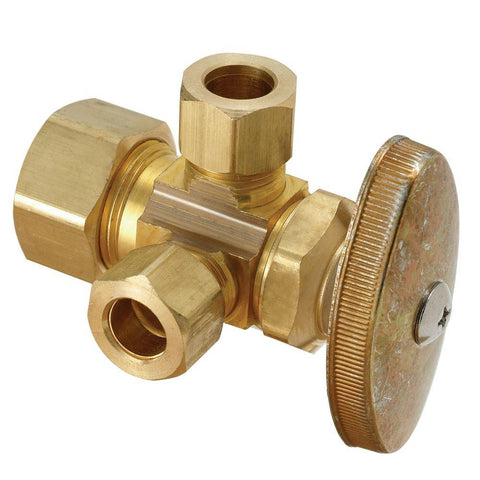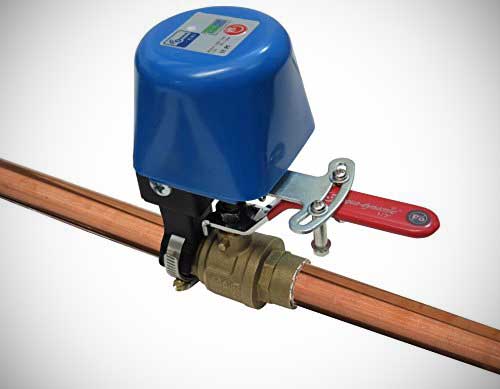The Importance of Valve Location Understanding: Reasons Revealed
The Importance of Valve Location Understanding: Reasons Revealed
Blog Article
They are making several good observations on the subject of 3 Ways to Defend Your Home for Possible Water Damage overall in this post which follows.

The plumbing system of your home is an intricate network of pipelines as well as shut-off valves. In the occasion of an emergency, you can reduce the water using the shutoffs.
Why Must I Fret about This?
Your washroom sink is defective, so you can conveniently locate the shut-off valve below the sink. For major leakages, you need to close the mainline shut-off valve.
Recognizing just how to do this is important in an emergency. The longer you wait to close the shut-off shutoff, the a lot more substantial the damage will certainly be. Besides, you may not have adequate time to determine just how to shut the shutoffs when you're panicking among an emergency. Discovering it now is the very best point so you can remain calm under pressure.
What Does the Shut-Off Shutoff Appear Like?
This is usually a handle that permits you to turn off the water for a particular home appliance, a local location (for instance the whole 2nd floor), or for the whole building. It is important to recognize where these valves are, so when something surface in any type of area of your residence, you can close it today. This will assist you avoid substantial water damages that will set you back thousands to repair.
Where are These Situated?
Your ideal wager is to call a water restoration services company for assistance. If you have a relatively moderate-sized house, try looking for a handle or bar.
Typically, building contractors mount the valves near or within the major, ground-floor shower rooms. The valves are intended to be visible, some pick to camouflage them for aesthetic reasons.
When to Call an Expert?
Must the abovementioned be the case for your localized valves, you have nothing else selection but to turn off the major water line, reducing the resource of water in your whole residence. After that call the plumber to evaluate the problem and shut down the valve in that area just so you can make use of the rest of the plumbing in other areas of your residence.
Bear in mind, these shutoffs are lifesavers and essential for any type of plumbing fixing. You can turn them off if you find any kind of leakages to prevent additional damage. Your home can obtain flooded not only with natural disasters but as a result of a ruptured pipe. In case of a plumbing emergency, shut down these shutoffs to avoid problems that call a trusted water damage repair service provider.
The plumbing system of your home is a complex network of pipes as well as shut-off shutoffs. In the event of an emergency, you can cut the water utilizing the shutoffs. The longer you wait to shut the shut-off shutoff, the a lot more extensive the damages will be. It is important to understand where these shutoffs are, so when something plants up in any type of area of your residence, you can close it right away. In the event of a plumbing emergency, shut down these valves to stop complications that call a reliable water damages remediation copyright.
How to Shut Off Water Valves
The Shutoff Valve to the Water Supply for an Individual Plumbing Fixture
To stop the flow of water to a specific appliance such as a sink, check the pipes for the nearest valve; it will likely be made of chrome and located directly below the fixture. Many showers and sinks have two valves for hot and cold water respectively, so make sure to turn them both off. Appliances like dishwashers, How to Shut Off Water Valveswashing machines, and refrigerators sometimes have switches, rather than valves, on the hoses connecting them to the wall. Water heater valves are usually located on the pipes above.
When it comes to which way you should turn the valve, keep in mind the old saying “righty tighty, lefty loosey.” In other words, turning a valve clockwise, or to the right, will restrict the flow of water while turning it counterclockwise, or to the left, will allow water to flow. If you have trouble turning the valve, wear a work glove to get a better grip, or use a wrench. Once you turn all of the valves clockwise as far as they will go, the water supply should be successfully shut off.
Before you start making repairs, have a bucket nearby so that you can drain any water that was left over in the pipes. After you finish the job, turn the valves counterclockwise as far as they will go to restore the water flow.
The Shutoff Valve for the Main Water Supply to Your Home
The first step is locating your main shutoff valve. You probably have a brass valve with a round handle near the area where water enters your home. It could be located in your kitchen, a utility closet, a downstairs bathroom, or even on an outside wall. Turning the valve clockwise as far as it can go should shut off all of the water fixtures in your home; however, you’ll need to turn on all faucets to empty any water left remaining in the pipes. Let your sinks and showers run until all water flow ceases, and then turn all faucets to the off position. After finishing your repairs or installations, turn the main valve back counterclockwise.
The Shutoff Valve for the Water Supply to Your Entire Property
Before you do anything, call your water company and ask for permission to access your street shutoff valve. If your home’s main water valve fails or needs replacing, you must turn off the water supply to your whole property before attempting repairs. You’d also need to do this before trying to fix a leak in the pipes connecting your home to the street valve. The shutoff valve for the property is usually located in the same metal box that contains the water meter. Remove the box cover and look for a handle; you might need a long wrench to reach it.
Different cities have different types of street valves. Ball valves have long, thin handles while gate valves have more rounded handles. A ball valve handle will usually be aligned with the pipe while open; turn it 90 degrees to the right to turn it off. Gate valve handles should be turned clockwise as far as possible to stop the water flow.

Do you enjoy more info about How To Protect Your Home From Water Damage? Place a short review down below. We'd be interested to hear your thoughts about this posting. We hope that you come back again in the near future. Make sure you take a moment to share this blog post if you enjoyed it. We treasure reading our article about 3 Effective Methods to Protect Your Home for Potential Water Damage .
Immediate care? Call! Report this page